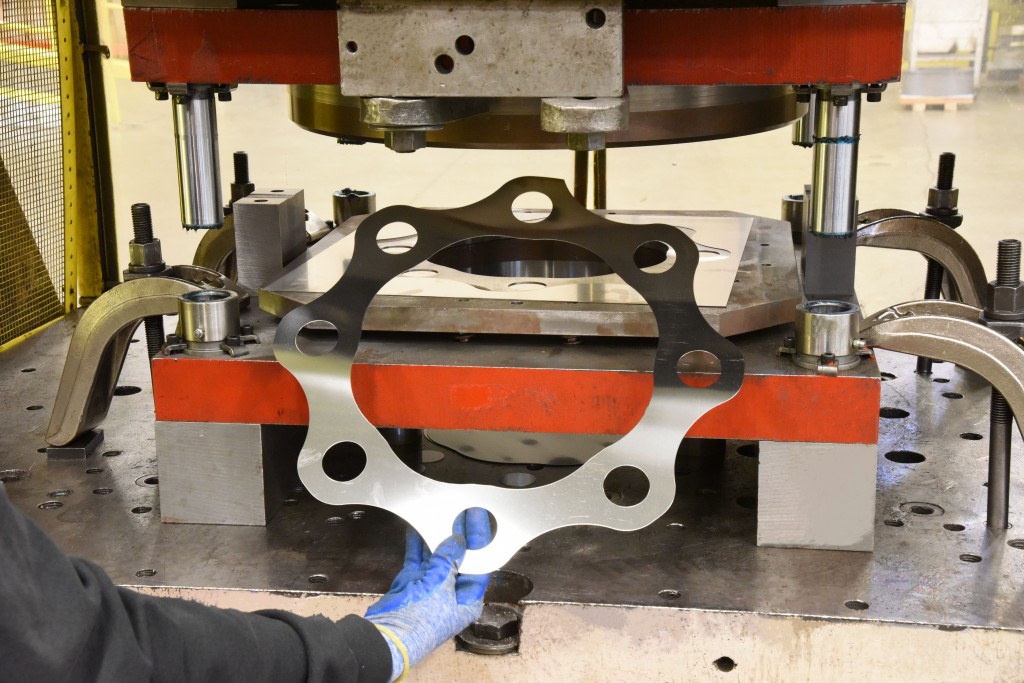Exactly How Metal Stamping Revolutionizes Production Performance
Exactly How Metal Stamping Revolutionizes Production Performance
Blog Article
Metal Marking Innovations: Elevating Manufacturing Processes for Superior Results
In the world of making procedures, steel marking has long been a keystone technique for generating a range of precision elements. With the unrelenting march of technical innovation, the landscape of metal marking is undergoing a considerable makeover.
Advancement of Steel Stamping Methods

Furthermore, advancements in material scientific research have actually brought about the advancement of high-strength alloys that can currently be flawlessly marked right into intricate shapes, catering to a more comprehensive series of commercial applications. The combination of robotics and expert system has actually better optimized the stamping procedure by boosting rate and precision while reducing the danger of human mistake.

Effect of Advanced Materials
Have innovative products changed steel stamping processes substantially in the production sector? By utilizing materials such as high-strength alloys, advanced compounds, and ingenious coatings, metal marking processes can now create parts that are lighter, more powerful, and much more sturdy than ever previously.
These sophisticated materials offer premium mechanical residential properties, corrosion resistance, and thermal stability, enabling manufacturers to fulfill the needs of contemporary markets such as aerospace, automotive, and electronics. Additionally, the use of sophisticated products in metal stamping has actually promoted the manufacturing of complex geometries and intricate layouts that were formerly unattainable with standard methods.
Moreover, the execution of advanced products has caused reduced material waste, lower manufacturing expenses, and much shorter preparations, making metal stamping procedures extra lasting and economical. As modern technology remains to advancement, the influence of sophisticated materials on metal marking procedures is expected to drive additional advancement and boost the competition of suppliers in the worldwide market.
Automation in Steel Stamping
The development of steel marking processes driven by the integration of innovative materials has established the phase for considerable innovations in automation within the manufacturing market. Automation in metal marking has reinvented production processes, enhancing effectiveness, precision, and overall outcome high quality. Via the usage of robotics, sensing units, and computer-controlled systems, tasks that were time-consuming and when hand-operated can now be carried out with unparalleled speed and accuracy.
Automation in steel marking not only speeds up production rates however additionally makes sure uniformity in the production procedure. By additional resources minimizing human treatment, the threat of errors is significantly reduced, leading to greater degrees of product harmony and dependability. Additionally, automation allows producers to article take on intricate stamping jobs that would be not practical or difficult to attain manually.
Additionally, automation in metal marking adds to a more secure working atmosphere by reducing the need for staff members to take part in repeated or harmful jobs - Metal Stamping. This change in the direction of automation not just enhances productivity but additionally paves the means for the future of manufacturing, where technology plays a main duty in driving operational excellence
Quality Assurance and Examination Equipments
With an emphasis on precision and dependability, quality control and inspection systems play a vital role in making certain item excellence in metal marking processes. These systems are created to check every stage of production, from material evaluation to the end product, to ensure that all elements meet the required requirements. By implementing sophisticated innovations such as optical assessment systems, coordinate measuring equipments (CMM), and automated determining tools, manufacturers can identify even the tiniest inconsistencies in dimensions, surface top quality, and total honesty of stamped parts.

Sustainability Practices in Metal Stamping
Building upon the structure of accuracy and dependability established with quality assurance and examination systems, the combination of lasting methods in metal marking procedures is progressively ending up being a focal factor for suppliers seeking to lessen ecological influence and enhance source utilization. Sustainability practices in steel marking include a variety of initiatives targeted at minimizing waste generation, power usage, and greenhouse gas discharges throughout the manufacturing process.
One secret facet of sustainability in steel marking is the adoption of environmentally friendly materials and innovations that advertise recyclability and read review waste decrease. By utilizing recycled materials and applying energy-efficient equipment, suppliers can reduce their carbon footprint and contribute to a much more sustainable production cycle. Furthermore, maximizing production processes to lessen product waste and energy usage not only benefits the environment yet additionally brings about cost financial savings for businesses over time.
Furthermore, the implementation of sustainable practices in metal marking can improve brand credibility and charm to ecologically aware customers. As sustainability remains to gain significance in the production sector, incorporating environmentally friendly efforts into steel marking processes is important for long-lasting success and competition in the marketplace.
Conclusion
In verdict, metal stamping strategies have substantially advanced with time, incorporating innovative products and automation to improve making procedures. Quality assurance and assessment systems play a critical function in ensuring superior outcomes, while sustainability techniques are increasingly being implemented to decrease environmental influence. These developments in steel marking have actually changed the market, causing a lot more sustainable and effective manufacturing approaches for different sectors.
Metal marking, once a handbook and labor-intensive process, has actually changed into a very automated and advanced method of forming steel sheets into various forms and designs.Have innovative products transformed steel marking processes considerably in the manufacturing market? By using products such as high-strength alloys, progressed composites, and ingenious layers, steel stamping procedures can currently create elements that are lighter, stronger, and extra resilient than ever in the past.
The advancement of metal marking procedures driven by the integration of advanced products has actually established the phase for significant developments in automation within the production sector.In verdict, steel marking strategies have considerably progressed over time, incorporating sophisticated materials and automation to enhance manufacturing procedures.
Report this page